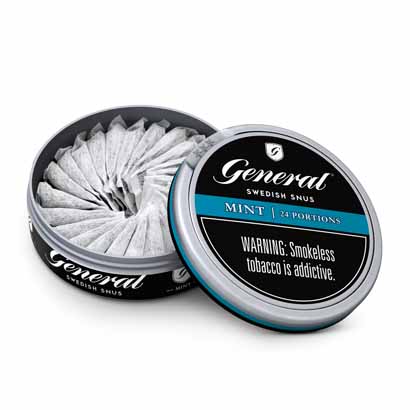Some members of a Tobacco Product Scientific Advisory Committee have argued that if a product such as snus does not qualify for the US Food and Drug Administration’s modified risk tobacco product (MRTP) status, the designation might as well not exist, according to a MedPage Today story relayed by the TMA.
“I think the health [benefits] are really clear compared to smoking – more so than for any other smokeless tobacco product,” committee member Kenneth E. Warner, PhD, of the University of Michigan in Ann Arbor, was quoted as saying. “My sense is that if this is not approved, it might be the death knell for the [MRTP] process because we would be basically saying you can’t get anything through this process.”
The committee was considering an MRPT application by Swedish Match North America in respect of its General snus brand. The company has been trying for years to have a health warning changed in respect of its General snus brand, but the issue has been kicked down the road.
Most people believe that the consumption of snus is hugely less risky than is smoking and that health warnings should reflect this.
However, some members of the Committee reportedly expressed concerns that increased popularity of General snus could lead to increased uptake among young people.
In fact, according to the findings of an FDA-requested Swedish Match study, Swedish Match snus product users in the US are mostly male, have a median age of 35, are fairly well educated, are slightly more affluent than general smokeless tobacco users, and are largely Caucasian.
The Committee met in Washington DC on February 6 to review the scientific evidence, health risk, claim development, testing and population impact revealed in a 10,000-person Consumer Research study requested by the FDA of Swedish Match.
It considered the statement that consumers in the 10,000-person study found to be the most understandable the warning: ‘Using General Snus instead of cigarettes puts you at a lower risk of mouth cancer, heart disease, lung cancer, stroke, emphysema, and chronic bronchitis’.
One Committee member was quoted as saying: “Swedish Match is a company that has never marketed to youth, it has a history I trust. Semantic issues can be fixed, but the public needs to be informed about tobacco harm reduction products”.
And, in summarizing the proceedings, the chairman of the panel, Dr. Robin Mermelstein of the University of Illinois at Chicago, said she believed there had been a fair amount of consensus against a background of a range of opinions. There had been consensus around the importance of providing accurate information about relative harms.
The goal of getting people who were unable to quit smoking off combustibles and on to less harmful products was certainly a laudatory one, Mermelstein said. She seemed to indicate, too, that there was a fair amount of consensus around the fact that whatever could be done to promote such switching was worthwhile, and that the Swedish Match approach was a potential path to such switching.
The FDA did not ask the Committee for a vote because, according to its spokesperson: “We felt what would be most useful [to us] was to have the qualitative discussion to make sure we hear the points that are concerning [the panel]”.
After listening to the proceedings, tobacco harm reduction expert David Sweanor, of the University of Ottawa’s Centre for Health Law, Policy and Ethics said the data on snus being dramatically less hazardous than smoking was overwhelming; as was the data on smokers not knowing this fact.
“In many ways, the FDA proceedings are less a test for Swedish Match than of the FDA itself,” he said. “After a decade of the tobacco law, and literally millions of American deaths from cigarettes, can the agency simply allow people to be told the truth? This should be no more complicated than allowing the public to know that three-point seatbelts – another Swedish innovation – reduce the risks of driving.”











